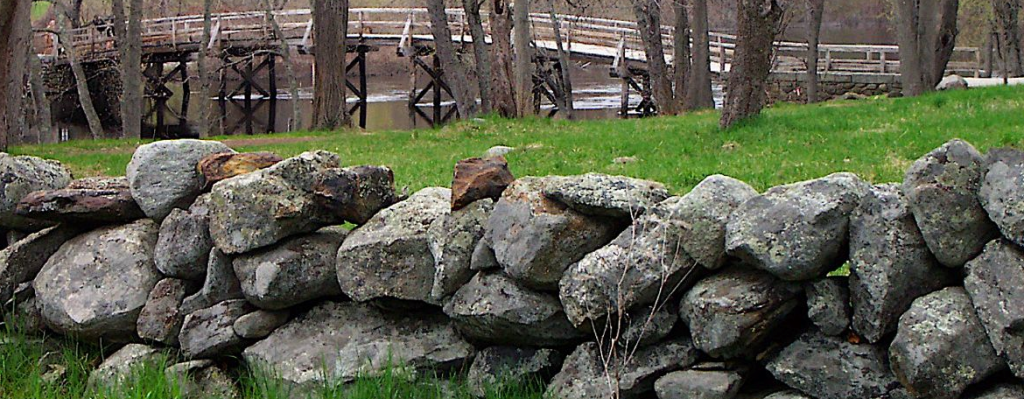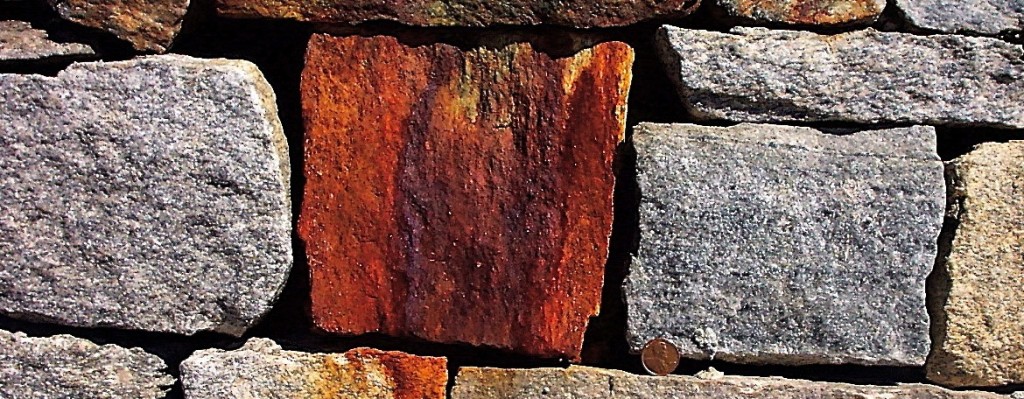If you live in New England, you likely see them every day. Some are wide, some are narrow. Some are orderly, some are a real mess, but no matter their location or condition, these engineering marvels have inspired poets and photographers, and add to a little magic to the local scenery.
 They’re rock or stone walls, and if you don’t have a stone wall on your property, there’s probably one around the corner or down the road.
They’re rock or stone walls, and if you don’t have a stone wall on your property, there’s probably one around the corner or down the road.
First, let’s agree what constitutes a stone wall. Noted stone wall expert Robert M. Thorson, a geologist at the University of Connecticut and the author of the definitive “Stone by Stone: The Magnificent History of New England’s Stone Walls,” considers a stone wall to be “any continuous row of large stones or stack of smaller ones that is more than four times as long as it is wide.” Anything shorter, he says, “is a cluster or pile of stones, not a wall.”
You’d assume our Colonial ancestors used these walls to mark farm boundaries and the like, but surprisingly, most Colonial farmers used rail and zig-zag fences made of wood — wood was more abundant at the time — to pen animals.

If you live in New England and garden, you know there are LOTS of rocks everywhere, but it wasn’t until widespread clear-cutting of New England forests in the late 1700’s and into the 1800’s that rocks beneath the soil were exposed to cold temperatures. Frost heaves resulted, and millions (billions!) of stones came up through the layers of earth to the surface.
Farmers may not have appreciated all these rocks in their fields, so they hauled them into the edges of pastures and fields, but they also started to build walls. Most of New England’s stone walls were built in between 1775 and 1825, “the golden age of stone wall building.” (Learn more about stone walls at http://stonewall.uconn.edu/)
We leave you with Robert Frost’s poem, “Mending Wall,” which contains the familiar adage, “Good fences make good neighbors.” Yes, the topic is repairing a stone wall!
Something there is that doesn’t love a wall,
That sends the frozen-ground-swell under it,
And spills the upper boulders in the sun,
And makes gaps even two can pass abreast.
The work of hunters is another thing:
I have come after them and made repair
Where they have left not one stone on a stone,
But they would have the rabbit out of hiding,
To please the yelping dogs. The gaps I mean,
No one has seen them made or heard them made,
But at spring mending-time we find them there.
I let my neighbor know beyond the hill;
And on a day we meet to walk the line
And set the wall between us once again.
We keep the wall between us as we go.
To each the boulders that have fallen to each.
And some are loaves and some so nearly balls
We have to use a spell to make them balance:
‘Stay where you are until our backs are turned!’
We wear our fingers rough with handling them.
Oh, just another kind of out-door game,
One on a side. It comes to little more:
There where it is we do not need the wall:
He is all pine and I am apple orchard.
My apple trees will never get across
And eat the cones under his pines, I tell him.
He only says, ‘Good fences make good neighbors’.
Spring is the mischief in me, and I wonder
If I could put a notion in his head:
‘Why do they make good neighbors? Isn’t it
Where there are cows?
But here there are no cows.
Before I built a wall I’d ask to know
What I was walling in or walling out,
And to whom I was like to give offence.
Something there is that doesn’t love a wall,
That wants it down.’ I could say ‘Elves’ to him,
But it’s not elves exactly, and I’d rather
He said it for himself. I see him there
Bringing a stone grasped firmly by the top
In each hand, like an old-stone savage armed.
He moves in darkness as it seems to me,
Not of woods only and the shade of trees.
He will not go behind his father’s saying,
And he likes having thought of it so well
He says again, “Good fences make good neighbors.”
SOURCES
http://www.earthmagazine.org/article/history-science-and-poetry-new-englands-stone-walls
http://stonewall.uconn.edu/

